The Invisible Chemicals That Pollute Our Living Rooms
We exercise, feed out kids carrot sticks and use eco-friendly products, but how much do we care about the air we breathe? The fresh new paint, that beautiful new sofa—do we really know what they’re made of? If you live in a world of blissful oblivion this might be your red pill. Because sometimes, it’s the things we can’t see that matter most.
Image credit: Staying Cosy
I’ll be honest—I slipped. Just after we moved in, we desperately needed to carpet the bedrooms. One was a hand-me-down from neighbours, but the other? A cheap quick-fix. Its smell was awful and lingered for days! And while we now know better, I learned firsthand—sometimes it’s hard to avoid the bad stuff when you’re on a budget.
Let’s talk about something many of us tend to brush off as not really happening — the microscopic chemicals in our homes, and the simple steps we can take to keep them out.
What Are VOCs and Where Do They Come From?
VOC stands for Volatile Organic Compounds—tiny molecules released as gases from certain solids or liquids. And yes, they’re everywhere. Ever unwrapped a new rug, opened a can of paint, or lit a candle—and noticed that strong chemical smell? That invisible cloud hanging in the air? Those are most likely VOCs.
We breathe them in while applying makeup, cuddling on the sofa, or prepping dinner. And although not all VOCs are harmful, many are linked to respiratory irritation, hormone disruption, allergies, and even long-term illnesses. The worst part? Some are odourless. You may not even know they’re there.
The levels of organic chemicals can be up to 2 - 10 times higher indoors than outdoors. After floor laying, painting or simply opening a permanent marker pen they may temporarily sky rocket to a 1000 times more than the outdoor levels.
Despite growing awareness, there’s still not a ton of solid research on the long-term health effects of these chemicals. Some pressure has been put on companies to replace the worst offenders for safer alternatives—which is a good start. Europe’s already ahead with stricter eco-regulations (thank you EU!), while the US… well, let’s just say it’s still catching up.
Image credit: Staying Cosy - made in Canva
The most common sources of VOCs at home are:
Furniture & Upholstery
Paints, Varnishes & Adhesives
Gas stoves & Fireplaces
Household cleaners, Air fresheners & Candles
Electronics & Dry-cleaned clothing
Cosmetics & Personal care products
Office & Craft supplies
Can our houses make us sick?
Home is meant to be our haven. Our place of comfort, rest, and protection. So it’s a little unsettling to think that it could also be making us unwell.
Some harmful chemicals are easy to spot—like that sharp smell when you unbox a new phone. Others feel deceptively pleasant—like the rich amber scent of a fancy reed diffuser. Some hit fast with headaches or congestion, while others quietly build up over time, slowly stirring up trouble inside our bodies.
I genuinely believe they play a role in many of today’s “puzzling” chronic health issues, the modern-day equivalent of Victorian lead-based paints or arsenic-laced wallpaper.
So, how exactly do these hidden toxins enter our homes?
Off-gassing or what’s that smell?
Image credit: Canva - edited
Hmm… love that scent when walking down a furniture store isle? That, my friend, is off-gassing in its full swing. The process of already mentioned VOCs actually getting into the air around us. Most off-gassing is strongest right after unboxing or installation, but can continue to be released even longer.
Off-gassing is when products release VOCs over time. They are typical for that “new” smell. It’s essentially a chemical vapour—some of which linger for even months or years after the scent is gone.
Remember that sofa or cabinet you bough two Christmases ago? It might still be silently polluting your air.
We tend to notice bad smells easily. Though the good ones—they can be just as sneaky. Our cosmetic pampering rituals are often filled with perfumed products. Of course we all want to smell lovely… but at what cost to our health?
Use this checklist to help you minimise off-gassing in your home
Indoor air pollution is real
We often think of pollution as something out there. Hovering over busy roads, rising from factory smoke, or grey city skies. The truth is, an indoor air pollution is a real thing! And not any less harmful. Since many of us spend most of our time indoors, myself included, what we breathe inside matters a lot.
I know how overwhelming it can feel. Thankfully, there is good news.
We have far more power over our immediate environment than over our city air. With a bit of extra care, healthier choices are absolutely within reach. Safer options do exist—and often, they don’t even cost more.
Since this is just the tip of the iceberg, let’s have a closer look at the usual suspects, and how to keep them at bay, right at our doorstep.
Furniture With Its Uninvited Guest—Formaldehyde
Let’s be real. Most modern furniture isn’t made from solid wood anymore. It’s usually particleboard, MDF, or plywood, all glued together with adhesives that often contain formaldehyde—a known human carcinogen.
Even foam mattresses carry their own hidden load. Aside from formaldehyde, the manufacturing process of polyurethane foam can leave behind traces of toluene and methylene chloride. That doesn’t sound exactly nice, does it.
When budget meets off-gassing
Cheap and cheerful, and honestly, with today’s prices fast furniture is often unavoidable. If you’re furnishing on a budget, don’t be too hard on yourself. You certainly have got some options:
Start small. Begin with a few affordable pieces and slowly upgrade to well-made, lasting ones over time.
Hunt second-hand. Quality pre-loved furniture is often a steal—and full of charm and character.
Embrace the void. If it’s not urgent, leave the space empty for now. Sometimes a little breathing room feels just right while you wait for the one.
If you’ve recently bought something that smells new, and well… toxic, let it air out before moving it indoors. Leave it in a garage, storage room, or a covered porch to off-gas for a few days.
Our living room glow-up
Last year we swapped some of our starter pieces in our main living area. Mixing in a unique brass accent table, a handwoven wool rug, and a few mango wood coffee tables—what a difference! It was a literal breath of fresh air. Free of chemicals, these natural materials bring the kind of warmth and character I’ve always loved.
For your own healthy home glow-up, start where it matters most—your bedroom, living room, or workspace. And keep a running list of long-term upgrades for later.
Tips for lowering your furniture VOCs:
Go for solid wood & natural fibres
When furnishing and accessorising choose natural materials. Vintage pieces are great too—they’ve already off-gassed.
Opt for natural latex or organic cotton mattresses
After all, your head and your nose is resting on them for hours every night.
Ventilate frequently
Especially during the first few weeks after purchase—open windows, use fans, and keep the air moving.
Seal it in
If you’re stuck with particleboard pieces, you can reduce emissions by sealing all exposed edges with low-VOC sealants.
Seek VOC-safe certifications
Look for labels like GREENGUARD for furniture and paint & OEKO-TEX for textiles.
Use air-purifying plants
While plants can neutralise VOCs to some extent—their efficiency is rather limited. Especially for nasty ones like formaldehyde or benzene. Still, they add beauty and emotional wellbeing, so absolutely keep them around! But don’t rely on them alone.
Gas Stoves & Their Hidden Hazards
Image credit: Canva - edited
Gas hobs were all I knew when I was a kid. We cooked everything on them—even our oven ran on gas! They were quick, efficient, and made sense for our family home. So, as an adult, I was shocked to learn that unvented gas stoves are among the biggest sources of indoor air pollution.
I mean, it’s literally in the name—natural gas. But what I didn’t realise is just how many harmful substances are released when that gas burns.
“Gas hobs were all I knew when I was a kid, so as an adult I was shocked to learn that unvented gas stoves are one of the biggest indoor air pollutants.”
What’s lurking in that flame?
To generate heat, gas stoves burn fuel and in the process release a mix of pollutants into the air—including nitrogen dioxide (NO₂), formaldehyde, and carbon monoxide. These aren’t just scary-sounding names—they’re genuinely bad for our lungs and especially risky for kids, who are more sensitive to air quality.
Even worse? Studies have found that unburned natural gas leaks from stoves even when they’re off. And what’s in that gas? Benzene—a known carcinogen. Sure, we’re talking about small amounts, but these can build up in the air over time, especially in poorly ventilated kitchens.
If you’ve ever felt a little headachey after cooking, or noticed your kitchen feeling stuffy—it might not just be the heat. These gases can contribute to respiratory issues, worsen asthma, and impact your overall indoor air quality more than you think. I didn’t think it was as bad, until I started digging deeper.
What can you do if you already have a gas stove?
Changing your whole stove arrangement and cooking habits is probably not going to happen overnight. Luckily, there are a few simple ways to reduce the risks while still enjoying your kitchen endeavors.
Use your extractor fan religiously
Even if it’s loud or feels annoying, it makes a big difference. Choose one that vents outside rather than just recirculating air.Crack open a window
Fresh air is your friend. Try to ventilate during and after cooking, even in colder months.Switch to induction or electric
If you’re renovating or upgrading, consider switching. I’ve tried both and honestly—they’re fast, easy to clean, and best of all—emits zero VOCs.Use a portable air purifier
Place it near your hob each time you cook, even a small change like this can make a big difference.
Cook with lids on
Using a lid traps heat, so food cooks faster and at lower temperatures—saving fuel and reducing emissions.
Paint, Sealants & DIY Jobs
Image credit: Canva - edited
VOCs aren’t only found in big-ticket items, they hide in the little things too. That tiny tin of paint, that quick fix spray sealant, or the glue you’re using to reattach a chair leg? Yep, all potential sources of indoor air pollution.
The smaller the room, the stronger their effect
Paint fumes or solvents used in confined spaces—like a bathroom or a nursery—can quickly build up and linger. And while that new paint smell might give you a strange sense of productivity, it’s not something you want to breathe in for long. And while creativity should always have the green light, prefering eco-friendly products can literally save us a lot of headaches.
Choose wisely:
Pick low-VOC or zero-VOC paints, varnishes, and adhesives.
Thankfully, most major brands now offer healthier alternatives—just check for certifications like the EU ECOLABEL, BLUE ANGEL, NORDIC SWAN or similar.
DIY outdoors if you can.
If not, ventilate well.
Always wear a protective mask.
Especially when sanding or using strong adhesives or finishes.
Give freshly painted rooms time to breathe.
Try not to sleep or spend long hours in a newly painted space for at least a few days. Be extra cautious if you’re pregnant or have small kids.
Cherry On Top—Fragrances
Image credit: Canva - edited
Don’t you just love that fresh feeling after a long shower? Your skin soft, your hair wrapped in the scent of your favourite shampoo, creams gently sinking in, candles flickering around a beautifully fragranced home. A proper, well-deserved evening of pampering. Oh yes… bliss.
But hold on—let’s rewind a bit. The science tells a different story.
You may wonder: How bad can it really be?
Fragrance chemicals are considered a top allergen, endocrine disruptors and carcinogens. Studies show that aromatic products emit more than 100 VOCs which pose serious threat to human health.
They are in cosmetics, air fresheners, home cleaners, scented toys! and yes, even in that gorgeous candle you got for Christmas. If it’s made of paraffin wax or contains synthetic perfumes, it may release toluene and benzene as it burns. Pay careful attention primarily in winter when the windows are tightly shut.
I’m not saying you need to toss all your candles and cosmetics—of course not, I love mine too!
But next time you’re about to freshen up your living room, pause for a moment and rethink your shopping list. A few conscious swaps can make your apartment feel just as lovely—without the hidden toxins.
Be mindful of what you bring into your home:
Unscented or naturally scented products with essential oils
Synthetic fragrances can contain dozens even hundreds of chemicals that aren’t listed on the label. Go for fragrance-free or gently scented options made with pure essential oils. Your skin and lungs will thank you.
Beeswax or coconut oil candles with cotton wicks
Skip the paraffin wax, a petroleum byproduct, and get clean-burning beeswax, soya or coconut oil candles instead.
Diffuser with organic essential oils
A water diffuser paired with organic essential oils is a great way to scent your home safely. Try calming lavender before bed or zesty orange in the morning. Just be sure to use pure oils, not fragrance oils, and go easy—less is more.
EWG-verified skincare and makeup brands
The Environmental Working Group (EWG) helps identify safer personal care products. Look for their verified mark on packaging, or browse their Skin Deep database when in doubt.
Try beauty ingredient checker apps – Think Dirty, Yuka, or INCI Beauty
These free apps let you scan or search cosmetic products to quickly see what’s really inside them. You’ll be surprised how many seemingly harmless items score poorly—these tools make navigating labels much easier.
Use a beauty app to see what’s really in your cosmetics
Image credit: Canva - edited
And a little reminder:
“Even “natural” doesn’t always mean safe or non-toxic. Always check labels, and trust your instincts. If something smells too strong, gives you a headache, or causes irritation—it’s probably time to swap it for something gentler.”
Dry Cleaning, Gadgets… Wait, Even That Has VOCs?
By now you’re probably starting to spot those invisible culprits yourself more easily—but VOCs don’t stop at furniture or paint. A few more everyday items are worth noting before we wrap up.
Dry-cleaned clothes
They often come home carrying a chemical called perchloroethylene or perc for short. It’s been linked to nervous system effects and is classified as a possible carcinogen. Try airing dry-cleaned clothes outdoors for a day or two before hanging them in your wardrobe—or better yet, look for an eco-friendly cleaner that uses CO₂ or wet cleaning methods instead.
Office equipment
Office supplies like printers, toners, and even laminators can release ozone and other VOCs into the air. Think of all those stuffy, poorly ventilated offices—yep, that air isn’t doing us any favours. If you work from home, keep your setup near a window and take regular breaks away from your desk, to stretch your legs and your lungs.
Electronics
Our daily devices also off-gas when new, particularly plastic-heavy gadgets like TVs and monitors. Let them breathe before you box yourself in with them. Open windows, unplug when not in use, and be mindful of dust, which can trap and carry VOC particles.
Craft supplies and hobbies
As joyful as they are—they can bring their own cocktail of fumes. Think glues, resins, solvent-based paints, and markers. Always craft in a well-ventilated room, wear a mask when needed, and try switching to low-tox or water-based alternatives whenever possible.
Graphic: Staying Cosy - made in Canva
A bit of a reality check, huh? And just the kind of info we need.
Makes you wonder why we don’t talk about these issues more openly. We can either bury our heads in the sand or face them.
I choose the latter. That doesn’t mean I’m going to obsess over every little detail or stop living my life to the fullest. Not at all. For me personally, it’s about finding that sweet spot between caution and reason. I am also using an air quality monitor to help me keep our home’s indoor climate in check.
Indoor Air Quality Monitor will hep you keep an eye on your home air pollution levels
Image credit: Canva - edited
Even polar bears have microplastics in their bodies. We can’t just leave the Earth—it is the only home we have. But we can choose to support businesses that are doing things right.
If we create demand for the good things, the bad stuff either has to adapt… or disappear.
***
SEARCH THE BLOG:***
***


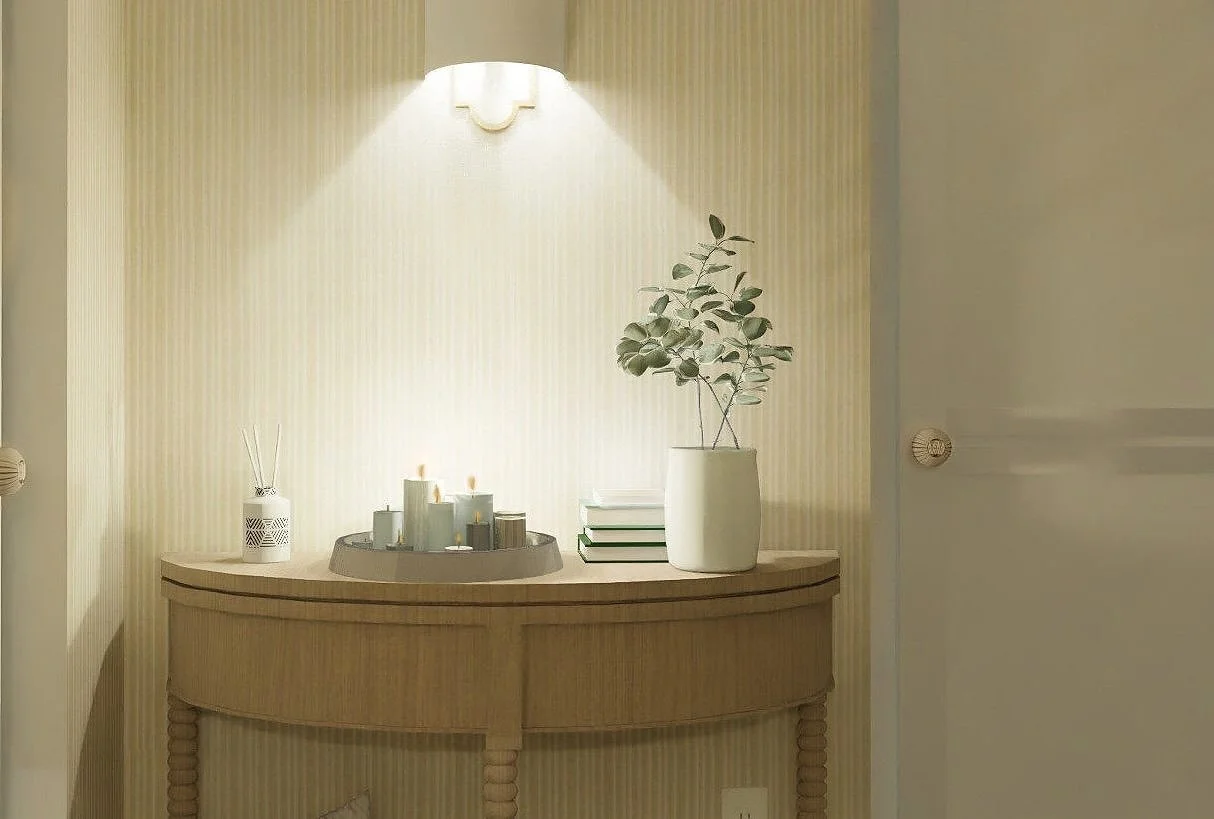
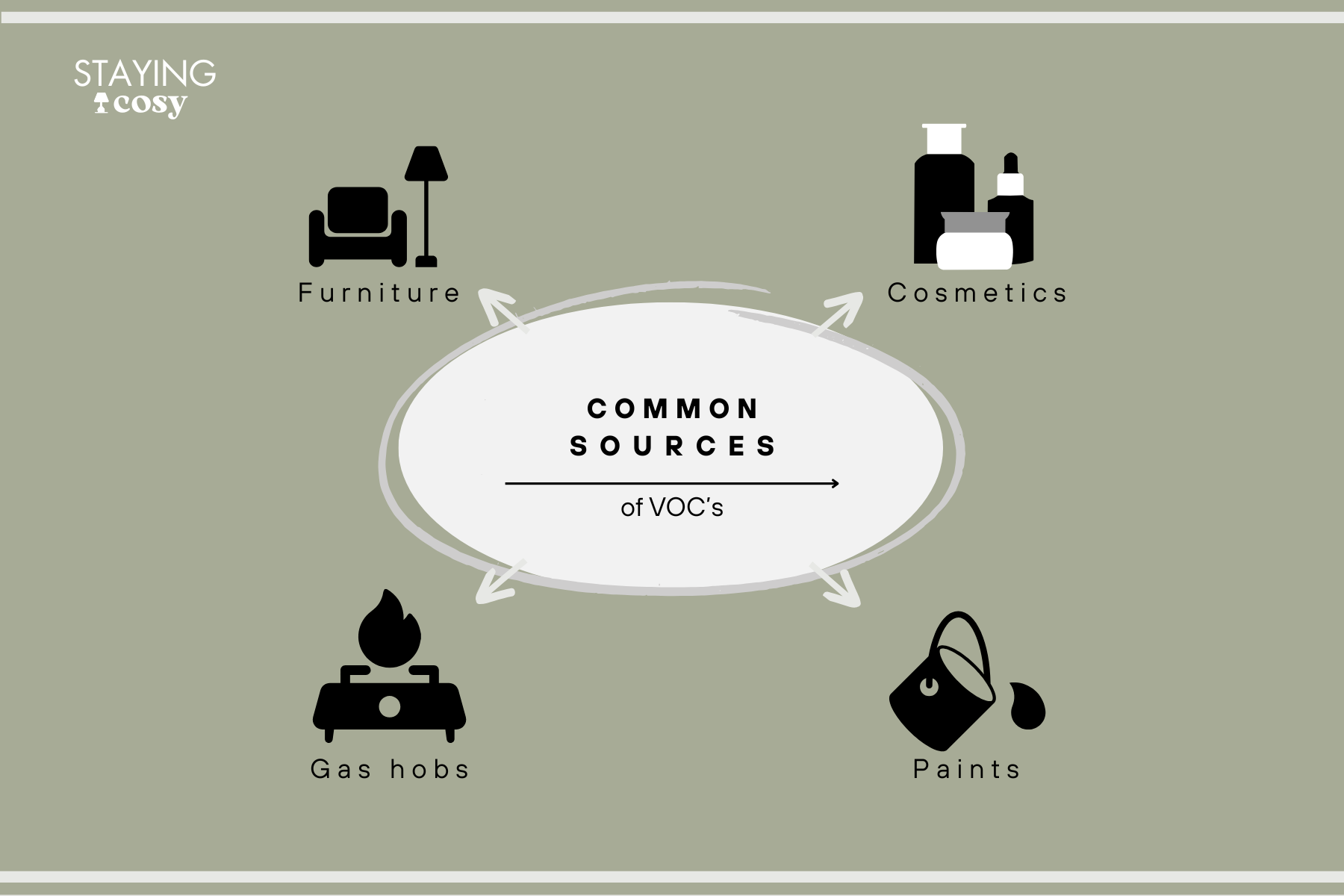

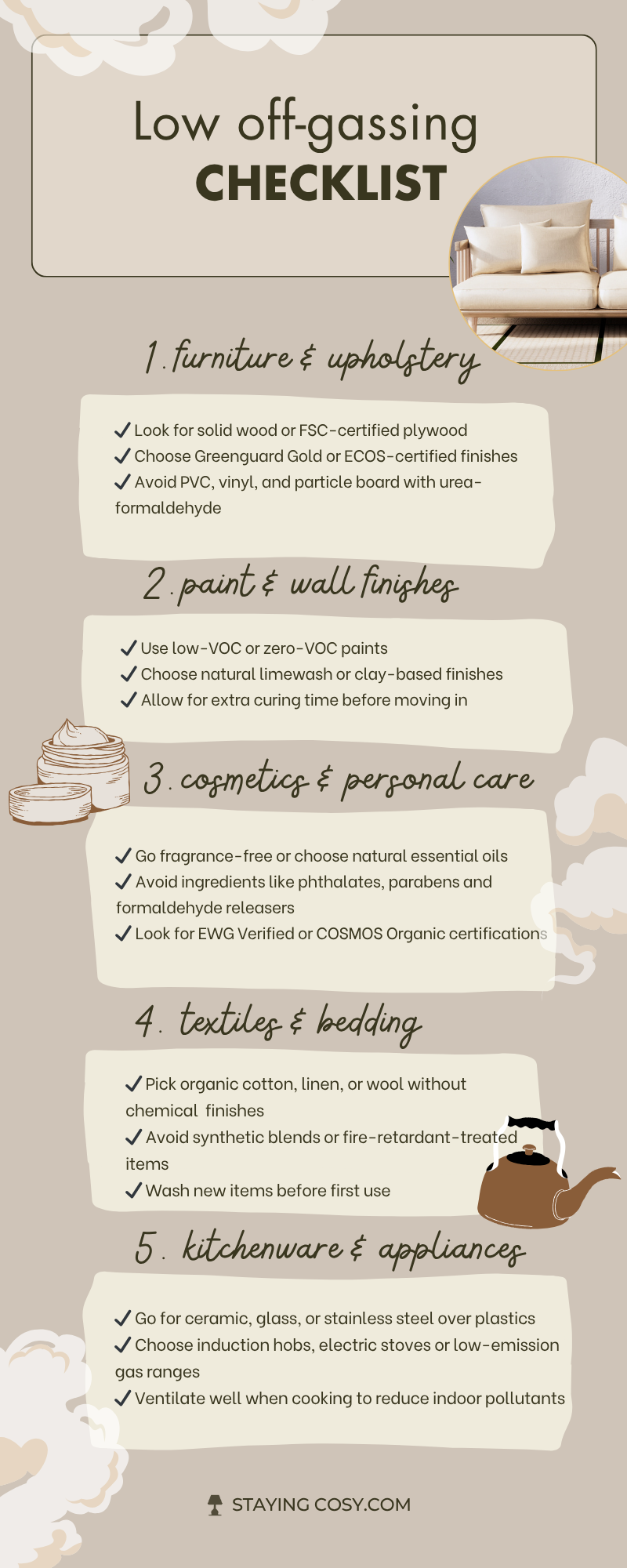


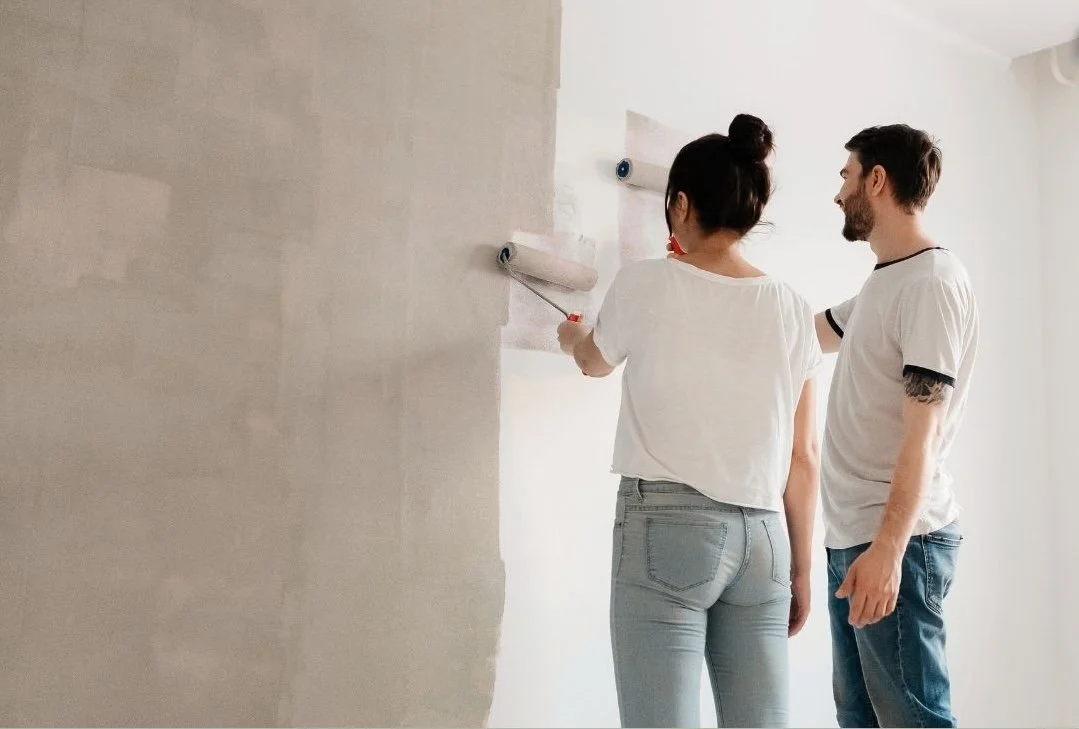
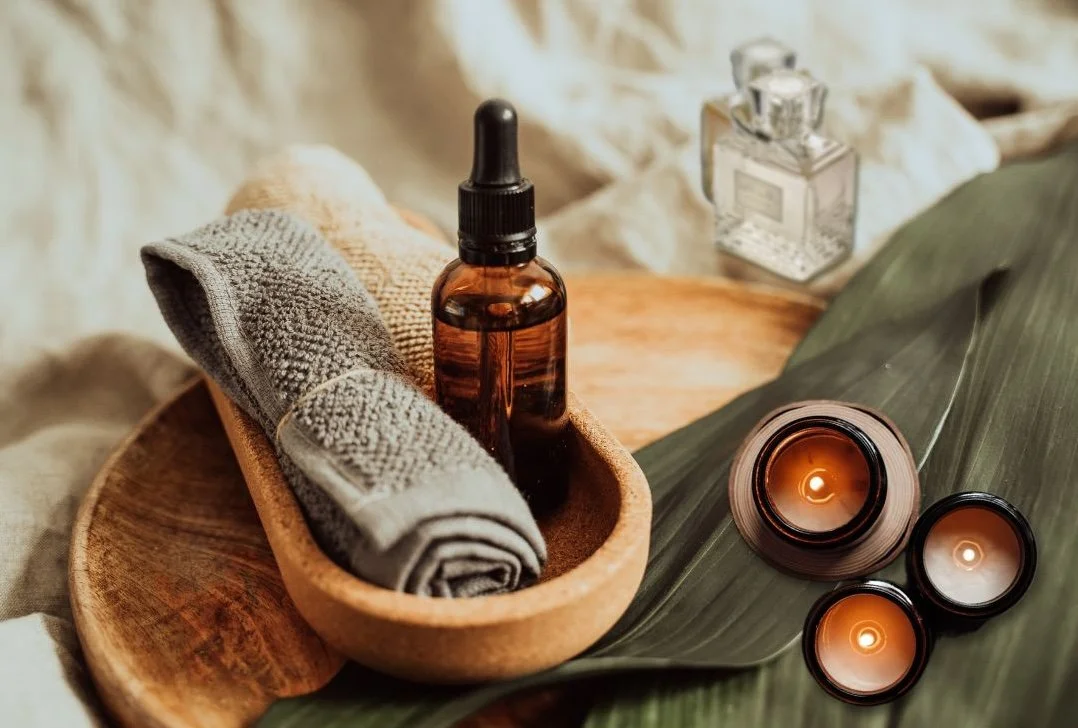

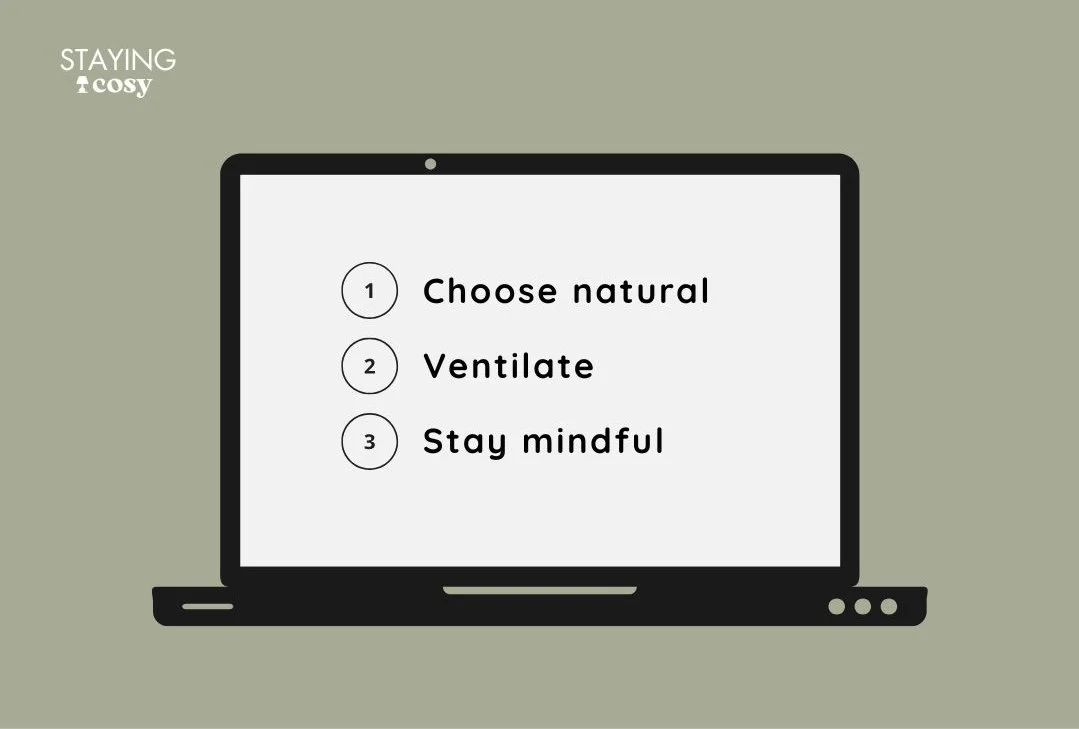








Bring mocha tones into your cosy Christmas home with natural decorations, DIY touches, and layered browns for a grounded festive vibe.